Right now the easiest way to do this is to use an AxesGrid, as in this yt cookbook example as well as this one.
Here's an example that plots the gas density at two times in a time series, using yt 3.2.1. The example data I'm using can be downloaded from http://yt-project.org/data.
import yt
import matplotlib.pyplot as plt
from mpl_toolkits.axes_grid1 import AxesGrid
fns = ['enzo_tiny_cosmology/DD0005/DD0005', 'enzo_tiny_cosmology/DD0040/DD0040']
fig = plt.figure()
# See http://matplotlib.org/mpl_toolkits/axes_grid/api/axes_grid_api.html
# These choices of keyword arguments produce a four panel plot with a single
# shared narrow colorbar on the right hand side of the multipanel plot. Axes
# labels are drawn for all plots since we're slicing along different directions
# for each plot.
grid = AxesGrid(fig, (0.075,0.075,0.85,0.85),
nrows_ncols = (2, 1),
axes_pad = 0.05,
label_mode = "L",
share_all = True,
cbar_location="right",
cbar_mode="single",
cbar_size="3%",
cbar_pad="0%")
for i, fn in enumerate(fns):
# Load the data and create a single plot
ds = yt.load(fn) # load data
# Make a ProjectionPlot with a width of 34 comoving megaparsecs
p = yt.ProjectionPlot(ds, 'z', 'density', width=(34, 'Mpccm'))
# Ensure the colorbar limits match for all plots
p.set_zlim('density', 1e-4, 1e-2)
# This forces the ProjectionPlot to redraw itself on the AxesGrid axes.
plot = p.plots['density']
plot.figure = fig
plot.axes = grid[i].axes
plot.cax = grid.cbar_axes[i]
# Finally, this actually redraws the plot.
p._setup_plots()
plt.savefig('multiplot_1x2_time_series.png', bbox_inches='tight')

You can do it your way too (using fig.add_subplots instead of AxesGrid), but you'll need to manually position the axes and also resize the figure.
Finally, if you want the figure to be smaller, you can control the size of the figure by passing a figure size in inches when you create the figure via plt.figure(). If you do that, you might want to adjust the font size as well by calling p.set_font_size() on the ProjectionPlot.

